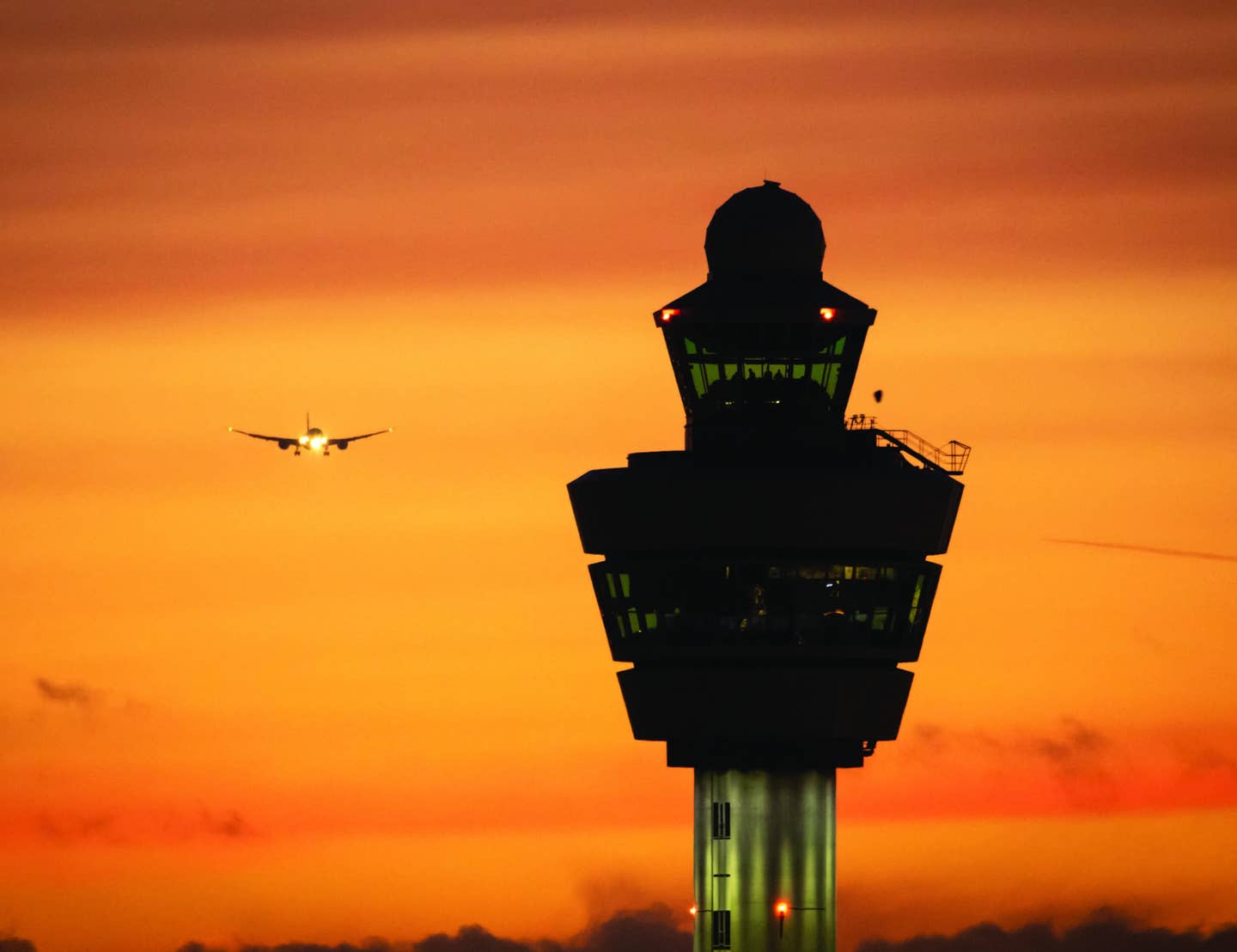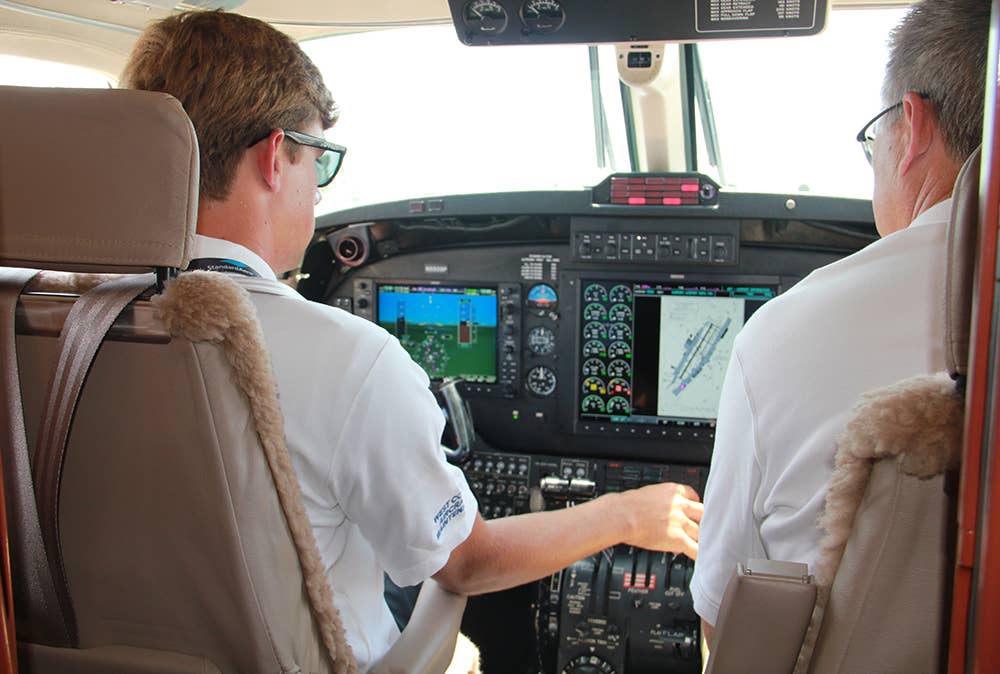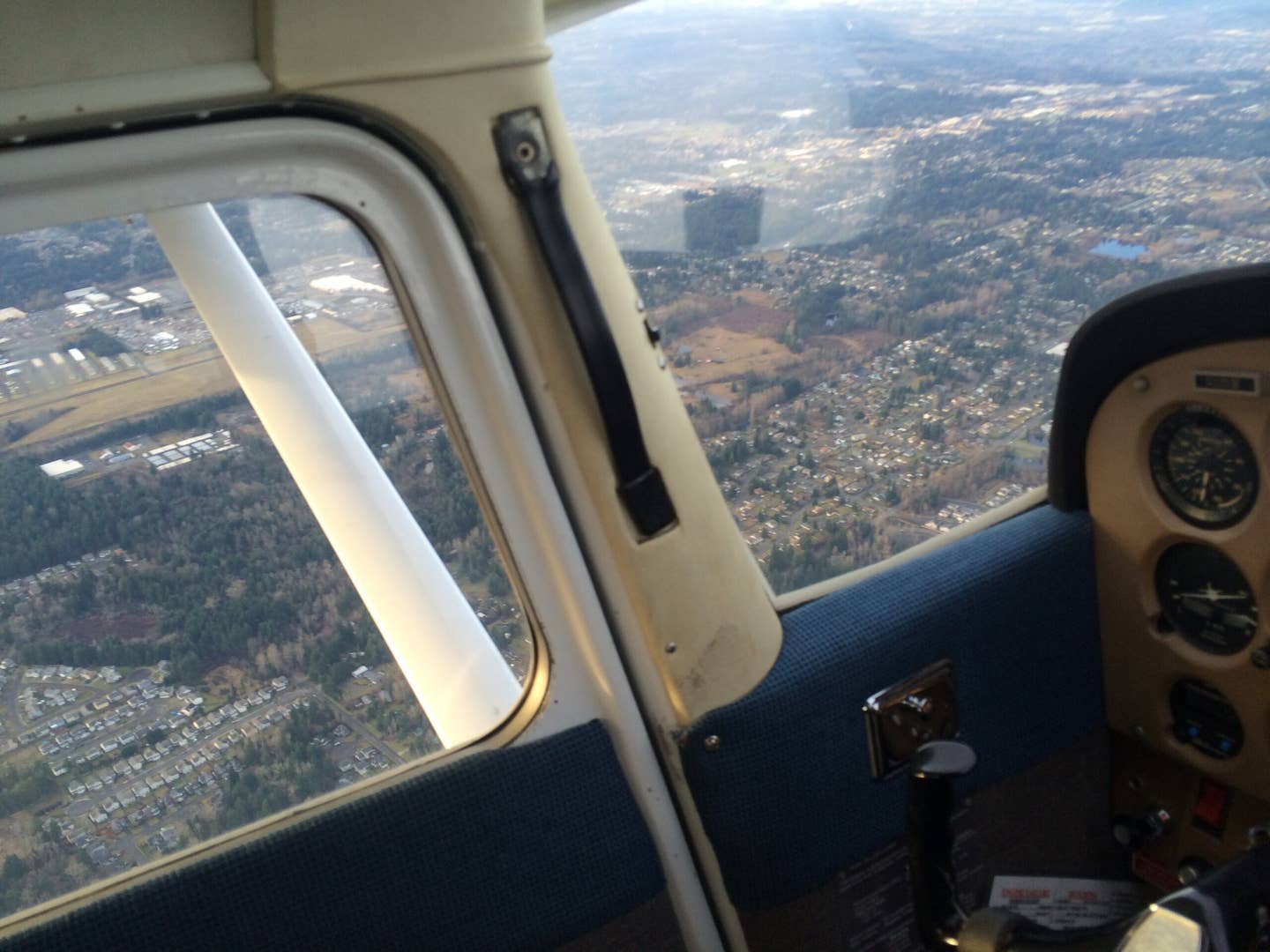Why Straight-In Approaches Aren’t So Straightforward
On a straight-in approach, pilots can miss cues for aircraft configuration changes, such as power reduction and addition of flaps.

NTSB reports are full of events that can occur when a pilot on a straight-in forgets the landing gear. [Credit: Adobe Stock]
On August 18, 2022, a twin-engine Cessna 340A collided with a Cessna 152 on final approach into Watsonville Municipal Airport (KWVI) south of San Jose, California, during VFR conditions.
Three miles out from the airport, the pilot of the C-340A announced he was doing a straight-in. The National Transportation Safety Board (NTSB) determined the larger, faster airplane was not configured for landing as its approach speed was 180 knots. The published flap extension speed for the C-340A is 160 knots, and the landing gear extension speed is 140 knots.
Muscle memory, checklist use, and procedures often go hand in hand. Had the pilot of the C-340A flown the traffic pattern for the airport beginning with maneuvering for 45-degree angle entry on to the downwind at midfield, he might have remembered to slow down the airplane and configure it for landing.
NTSB reports are full of similar but thankfully mostly non-fatal events that can occur when the pilot on a straight-in forgets the landing gear—often at a non-towered airport.
At a towered airport, the controllers often contact the pilot and advise them that their gear is not down with a simple "check gear" query. NTSB investigations into gear-up landings often include a statement from the pilot, who note that the straight-in, devoid of the usual cues such as turning on to the 45 or downwind, resulted in forgetting to run the checklist, which included the action of lowering the landing gear with the phrase "gear down and locked."
Many instructors, myself included, advocate for at least three gear checks: downwind, base, and final. In the faster aircraft such as a twin, the landing gear is often deployed on the 45 as a means to help slow down the aircraft.
In a fixed-gear airplane you don't have to worry about the landing gear position, but checking the position of the gear if possible (like looking out the window in the high wing aircraft) is a good habit.
Verbalizing the checklist on each leg of the pattern is also a good habit. There may be things that are "deferred," such as putting the propeller to full as one does on final in a complex airplane to facilitate a go-around if needed.
My U.S. Air Force Academy-trained instructor beat this into me—and recitation had to end with "check list complete" in my authoritative pilot voice.
On a straight-in approach, you miss the cues for aircraft configuration changes, such as power reduction and addition of flaps.
Here's a teachable moment: dropping all the flaps at once can potentially bend metal if the aircraft is outside of VFE, and will trigger a pitch change that catches many novice pilots by surprise. The natural reaction is to take all the flaps out in one movement, which makes the bad situation worse.
I demonstrate this to the learner at an appropriate altitude and at a flap-friendly speed in the practice area just so they know what it feels like and what it does to the airplane and why it is not something you want to mess with when you are close to the ground.
We then discuss how the incremental deployment of flaps prevents the pitch surprise, as does following the prelanding checklist on each leg of the pattern to achieve the published speeds for each leg as recommended by the manufacturer.
Poor Approach, Poor Landing
One of the first lessons to be taught to the novice pilot is that a poor approach results in a poor landing. If you are behind the airplane, as in slow to reduce throttle, start the descent, deploy flaps, that landing will be ugly. This can happen during straight in approaches as the legs of the pattern are a reminder to the pilot to run the checklist and reconfigure the aircraft. Instead, the pilot relies on experience and knowledge of the aircraft performance to determine when to do configuration changes. This experience is best gained with a seasoned CFI next to you and flown in an appropriate environment, like at a towered airport when the pilot requests and ATC grants a straight-in approach.
Straight-ins at non-towered airports are especially dangerous as we learned by the Watsonville collision. When an aircraft comes bombing into a pattern already occupied by other aircraft, it is very much like running a red light. There may be someone closer than you think on a collision course. You can’t slam the brakes on an airplane in the air. Entering the pattern on the 45 at pattern altitude provides better situational awareness as it gives the pilot more of an opportunity to scan for traffic, see and avoid it.
It is for this reason many instructors discourage their learners from doing straight-in approaches. While I agree they are not a good idea at a non-controlled airport, they should be, at the very least, briefed and the scenario flown in the practice area so the learner knows when to refer to the checklist, when to reduce power, when to lower the flaps, etc.
Outside a request from a tower, there are times when a straight-in is called for, such as when a magneto fails a few miles outside the traffic pattern and the airport is the closest suitable runway.
This is the scenario I use with my learners, as I experienced it in the real world as a learner. My CFI demonstrated the proper technique, troubleshooting the issue to no avail, calling my attention to the diminished engine power available and sight picture, and ensuring that we had the runway made before applying flaps and reducing the power to idle.
Many years later, I was the CFI and had this happen. The straight-in and landing was a nonevent. The chief mechanic brought me fragments of metal that had been the left magneto to show my ground school class.
Another scenario where a straight-in is appropriate is when the weather that was VFR or MVFR drops to IFR and you, the noninstrument-rated pilot in the non-IFR-equipped aircraft need to get down quickly.
Don’t Be That Pilot
There are pilots who, when they hear another pilot on the radio state they are planning to do a straight-in approach, will scold the pilot or even threaten to call the FAA on them. This is not a discussion to have on the radio.
I have witnessed this at nontowered airports. I tell my learners not to engage that person. Focus on flying the airplane. If you are the pilot doing the straight-in for any of the above mentioned reasons—weather, a mechanical issue, or perhaps even an airsick passenger that necessitates getting on the ground quickly but not declaring an emergency—wait until you get on the ground before you get into a "discussion" with the other pilot.

Sign-up for newsletters & special offers!
Get the latest FLYING stories & special offers delivered directly to your inbox






